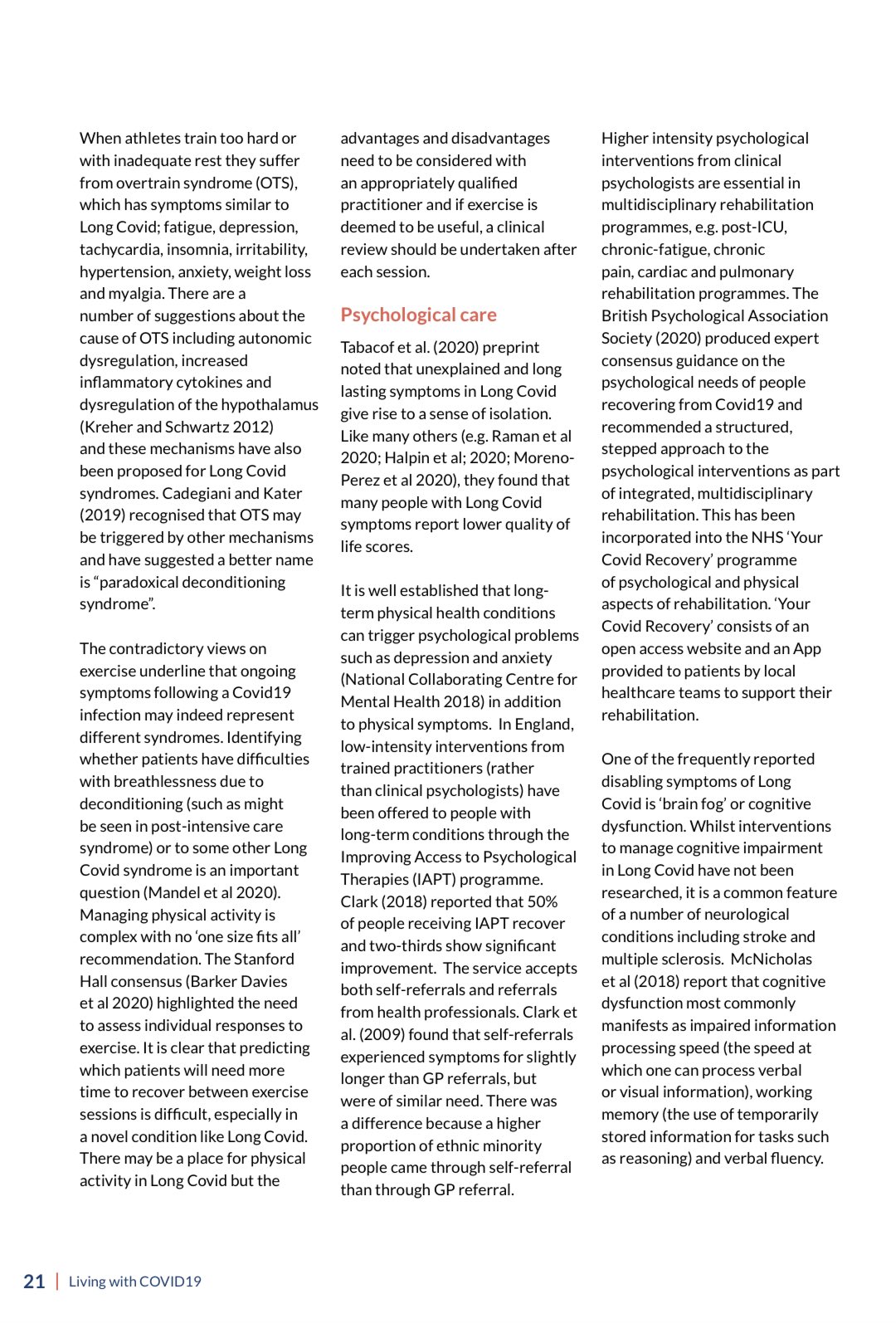A key element of rehabilitation is exercise. Exercise produces supercompensation to make the body stronger, but individuals have different levels of exercise tolerance. Rehabilitation exercise therefore needs careful prescription and monitoring.
The use of exercise as a therapy in Long Covid is contested. On one hand, many have noted the similarities between some of the symptoms of Long Covid and Myalgic Encephalomyelitis/ Chronic Fatigue Syndrome (ME/ CFS) which can include exercise intolerance. Studies of SARS survivors raised concerns that exercise intolerance may persist for months after infection and Raman et al (2020) found exercise intolerance correlated with markers of systemic inflammation. Many of the patients in Raman’s study stopped Cardio Pulmonary Exercise Testing (CPET) early because of generalised muscle ache and fatigue rather than breathlessness.
In July 2020 NICE made a statement on its website that it should not be assumed that the recommendations on graded exercise therapy in its 2007 guideline on ME/CFS (CG53) apply to people with fatigue following Covid19. NICE issued a new draft guideline on ME/CFS for consultation in November 2020, recommending that exercise should be personalised and overseen by a physiotherapist or occupational therapist with specialist training and expertise. It recommends that fixed incremental increases in physical exercise, for example graded exercise therapy, should not be used.
On the other hand, physical activity is a well-established rehabilitation intervention for people who have become deconditioned, including those who have been bed ridden for some time. Whilst exercise should be approached with caution in ME/CFS, it may be helpful in other viral conditions, for example a systematic review of exercise and cognitive function in people living with HIV (Quigley et al 2019) suggested that physical activity may preserve or improve cognition, although none of the studies were interventional and further research is needed.
Exercise tolerance/intolerance should not be seen as binary concept. A better term might be “symptom-titrated physical activity”. Using the term physical activity instead of exercise therapy also highlights the need to think about exercise as part of a person’s day to day life and the need to pace all activity. Pacing has parallels with elite athletes who cannot train to their maximum every day of the week and need to plan when to fit in the most demanding session and the lighter activity to complement it.


